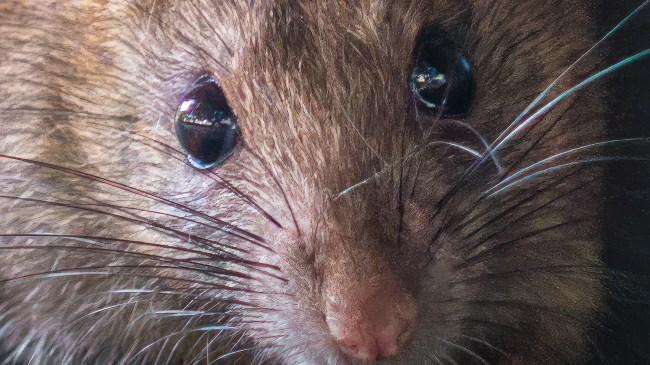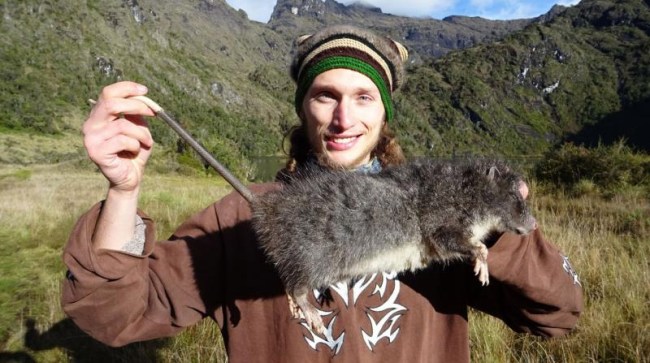iStockphoto
It took six months of searching on the island of New Guinea, but the gigantic Subalpine Woolly Rat (Mallomys istapantap) has finally been caught on camera. 30 years after it was last recorded with just a scientific description, Frantisek Vejmelka, a Czech doctoral candidate from the Biology Center of the Czech Academy of Sciences and the University of South Bohemia, became the first person ever to scientifically document the creature.
In fact, until Vejmelka found one, the Subalpine Woolly Rat had only been seen alive just one time in the last 30 years. In addition to capturing the first-ever photos and video of the elusive animal, Vejmelka also became the first to record the biometric measurements of males and gathered data on the animal’s diet, parasites, activity patterns, movement, and other aspects of its lifestyle. His research was published in the journal Mammalia.
“It’s astonishing that such a large and striking animal has remained so poorly studied. How much more is there to discover about the biodiversity of tropical mountains?” Vejmelka said in a statement.
Vejmelka was able to accomplish this discovery with the help of local Indigenous tribes and landowners which allowed him to set up camera traps and to go on night hunts in search of the Subalpine Woolly Rat, the largest species of rat in the Australia and Oceania.
“If it weren’t for the indigenous hunters who accompanied me in the mountains and helped me locate the animals, I would never have been able to collect this data,” he said.
“The shaggy-furred Mallomys istapantap leads a hidden life in remote, hard-to-reach areas,” Vejmelka explained. “It climbs trees at night, hides in underground burrows or tree canopies during the day, and feeds exclusively on plant matter. With sharp incisors, thick fur, 8 cm-long paws, a total body length (including tail) of 85 cm, and a weight up to 2 kg, it is a striking and formidable creature. However, due to its nocturnal habits and the inaccessibility of its habitat, it has been extremely difficult to observe in the wild.”
Content shared from brobible.com.


